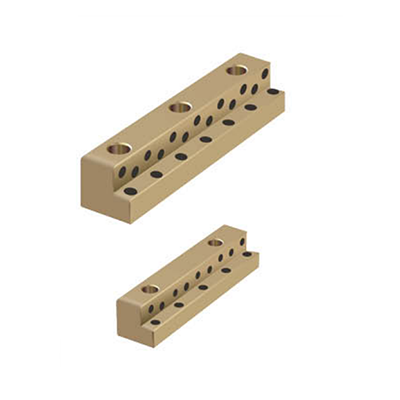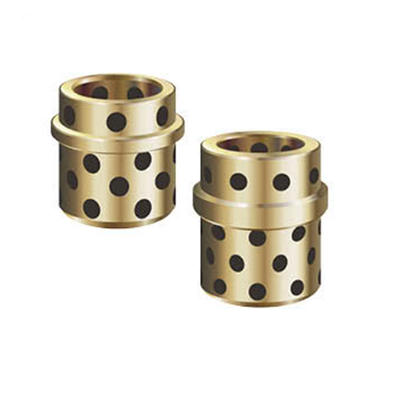First, self-lubricating bushings can significantly reduce the maintenance costs of enterprises. In traditional lubrication systems, equipment needs to be regularly refueled, lubricating oil replaced and waste oil disposed of, which not only increases material costs, but also leads to frequent equipment downtime and maintenance work. In contrast, self-lubricating bushings form a lubricating film on the friction surface through built-in solid lubricants (such as graphite, molybdenum disulfide, etc.), avoiding the use of external lubricating oil, thereby reducing the cost of lubricating oil procurement, storage and replacement. This means that enterprises not only save direct material costs, but also reduce equipment downtime and maintenance costs, thereby achieving higher production efficiency.
Secondly, the high-efficiency performance of self-lubricating bushings helps to improve the overall reliability of the equipment. Since the bushing can maintain a stable lubrication state during the friction process, the friction coefficient is greatly reduced, thereby reducing equipment wear and energy loss. Especially in precision machinery and automation equipment, the use of self-lubricating bushings can significantly improve the accuracy and operating stability of the equipment, and avoid failures and downtime caused by insufficient lubrication or uneven grease. This stability not only extends the service life of the equipment, but also reduces production interruptions or quality problems caused by equipment failure, thereby improving the overall production efficiency of the enterprise.
Under today's increasingly stringent environmental regulations, the environmental advantages of self-lubricating bushings have become particularly important. Traditional lubrication systems not only consume a lot of lubricating oil during use, but may also cause grease leakage and pollution, which means high environmental compliance costs for companies, especially those operating in areas with high environmental requirements. The use of self-lubricating bushings completely avoids dependence on external lubricants, thereby reducing lubricant emissions and waste disposal problems. This not only helps companies reduce environmental pollution, but also ensures that they can easily cope with increasingly stringent environmental standards such as the EU REACH regulation.
In addition, the use of self-lubricating bushings can also enhance the sustainability of enterprises. As the world pays more and more attention to sustainable development, many companies have made green production and energy conservation and consumption reduction as strategic priorities. In this context, the application of self-lubricating bushings undoubtedly provides companies with an opportunity to reduce their carbon footprint and resource consumption. It reduces overall energy consumption by reducing the use and waste of lubricants, helping companies reduce their dependence on natural resources in the production process. In addition, due to the durability and high load capacity of self-lubricating bushings, they can reduce the frequency of equipment replacement, which also helps to reduce material waste and production costs in the manufacturing industry.
Finally, the wide adaptability of self-lubricating bushings enables it to meet the needs of different industries and working environments. Whether it is high temperature, high pressure, low temperature, or in harsh chemical environments, self-lubricating bushings can perform well. This makes it widely used in many industries such as heavy machinery, automated production lines, automobiles, aerospace, etc. Especially in equipment that requires high loads and long-term operation, self-lubricating bushings can effectively improve the overall performance and durability of the equipment with their excellent wear resistance and stability, thus playing an important role in these industries.

 English
English Español
Español



